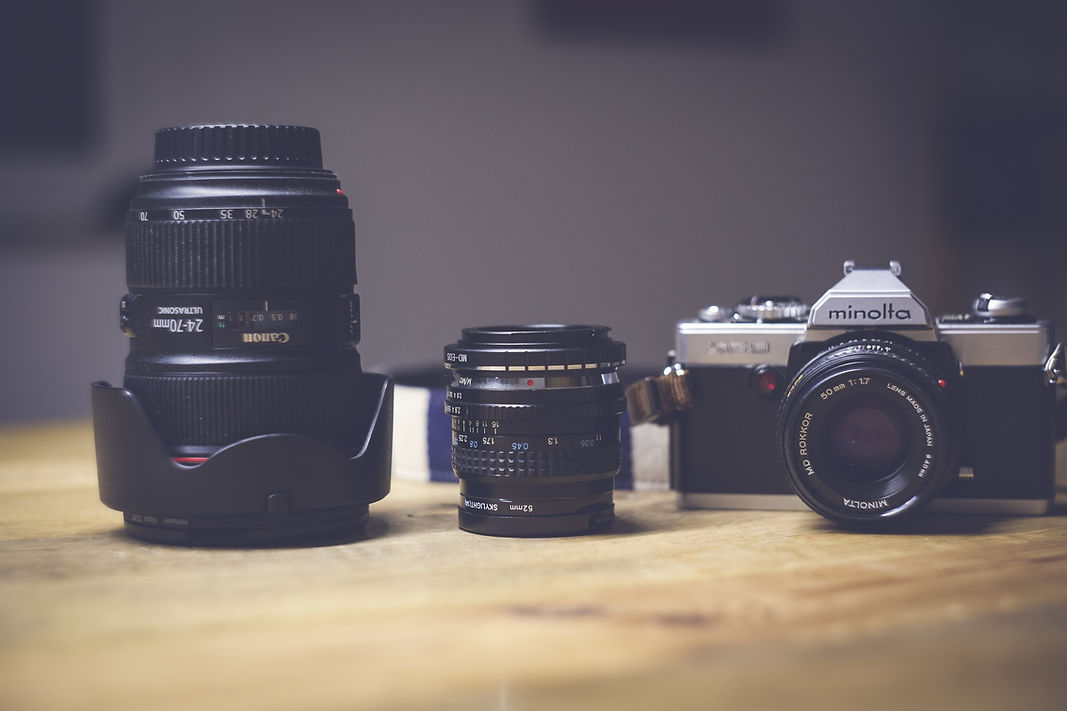

Welcome
Photography equipment
When starting your photography journey here at RIAT, a budget DSLR camera and a versatile lens are essential for capturing both static and flying displays. As you progress and become more serious about your craft, investing in higher-quality lenses, a sturdy tripod, and additional accessories like, cleaning equipment, SD and XQD cards, can elevate your photography to the next level. This guide will help you understand the basic gear needed for beginners and the advanced and the equipment that can enhance your skills as you grow.
ESSENTIAL PHOTOGRAPHY GEAR
-
Main Camera Bodies, Nikon, Cannon, Sony Etc. (DSLR / Mirrorless)
-
Telephoto Lens, Anything really from 300mm, (100–400mm / 150–600mm / 200-500mm)
-
Wide-Angle Lens (18–55mm / 24–70mm) A 18-200mm will be perfect for budget and an all round lens.
-
Backup Camera Body (optional) If you can afford another body. As you can use both and not have to change lenses all the time.
-
Spare Batteries (2–3 minimum)
-
High-Speed Memory Cards (64GB+) As you may take 1000s of photos over the few days. I take 6 with me plus a 128 GB SD Card.
-
Lens Hood(s), This protects from sun glare.
-
Camera/Lens Rain Cover
-
Padded Backpack or Sling Bag
SUPPORT & COMFORT
-
Monopod (optional for long lenses) Works great for slow shutter speeds for prop blue and helicopters.
-
Folding Chair or Compact Stool
-
Microfiber Cloths & Lens Cleaning Kit
-
Sunscreen & Lip Balm
-
Hat or Cap with Brim
-
Reusable Water Bottle
-
Snacks / Packed Lunch
-
Earplugs / Hearing Protection
-
Weather-Appropriate Clothing (Layers)
-
Comfortable Shoes (walking/standing)
POWER & STORAGE
-
Power Bank (USB Charger)
-
Charging Cables
-
Portable SSD / Backup Storage (optional)
-
Labelled Card Case or Wallet
-
Extra Ziplock Bags (for dust or rain)
-
Pro Tips for Managing Your Gear at RIAT
-
Travel Light – But Prepared: Don’t overload yourself. A two-lens setup (long + wide) covers 90% of what you’ll need.
-
Use a Sling or Harness: Prevents fatigue over the long day, especially with a large lens.
-
Label Your Cards & Batteries: So you don’t mix used and unused ones.
-
Practice Panning Beforehand: Especially with heavier lenses, muscle memory is key.
-
Pack the Night Before: You’ll likely leave very early and don’t want to forget anything.
01
Photography for Beginners
Welcome to the world of Aviation Photography! I started my journey back in 2006 with my parents' trusty Nikon D40x and a Nikon 70-300mm lens, proving that you don't need expensive gear to begin. With a budget of around £300, you can find great older models from brands like Nikon, Canon, and Sony that still deliver impressive results. Remember, understanding the basics is key and you can find helpful tips on my air show settings page. Don't hesitate to explore second-hand options from trusted sources to save money while building your collection!
02
What equipment do I need?
Photography is a wonderful journey, and the great news is that you can capture stunning images no matter what your budget is! The most important factor is to truly understand your equipment, whether you’re working with a DSLR or a mirrorless camera. Personally, I’ve had quite the evolution in my photography gear, starting with a Nikon D90, then moving up to a D7200, and finally achieving my dream setup with the D500 and D850. Each step has taught me valuable lessons about the art of photography.
If you’re currently in the market for a new camera or looking to upgrade your lenses, I highly recommend exploring the second-hand market. It’s an excellent way to save money while still getting your hands on quality equipment. For instance, if you have a budget of around £600, you can find some fantastic options that will enhance your photography experience. Remember, it’s all about knowing your camera and making the most of it.


